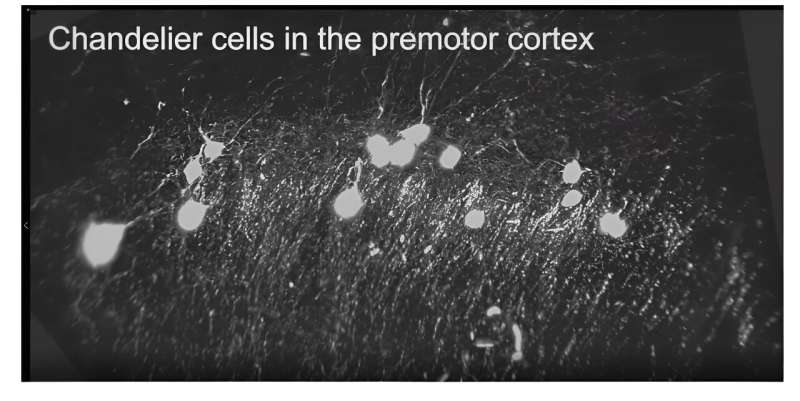August 18, 2023 feature
This article has been reviewed according to Science X's editorial process and policies. Editors have highlighted the following attributes while ensuring the content's credibility:
fact-checked
peer-reviewed publication
trusted source
proofread
Study unveils an adaptive neural mechanism that supports robust and flexible learning

For decades, neuroscientists have been trying to better understand how humans learn behaviors and flexibly adapt to new situations or real-world challenges. While humans and other mammals are acquiring new behaviors, neural circuits in their brain are known to re-organize themselves, along with the connections between them.
Studies have found that specific subgroups of inhibitory interneurons can contribute differently to learning. However, the unique contributions of these genetically defined classes of interneurons are still poorly understood.
Researchers at Johns Hopkins University School of Medicine and the Max Planck Florida Institute for Neuroscience carried out a study exploring the role of a subgroup of interneurons known as chandelier cells (ChCs) in supporting the robust and flexible acquisition of new behaviors.
Their paper, published in Nature Neuroscience, unveiled an adaptive inhibitory pattern of inter-connections in the brain that contributes to the re-organization of cortical circuits during learning.
"It is well known that inhibition plays a critical role in shaping learning-dependent circuit changes," Hyungbae Kwon, one of the researchers who carried out the study, told Medical Xpress.
"The core function of interneurons is generally known to provide inhibitory tones in network. For example, when interneurons fire, overall network excitability is reduced, and synaptic plasticity induction at excitatory synapses become difficult. However, just defining interneuron functions as a uniform inhibition is overly simplified, and it is presumed that their roles are much more specialized when considering a high diversity of subtypes," Kwon added.
In their recent study, Kwon and his colleagues targeted ChCs, also known as axo-axonic cells, a type of genetically specialized GABAergic interneurons found in the outer layer of the brain (i.e., cortex). Their objective was to unveil the specific role of these interneurons in performing cortical computations, by performing a series of experiments on live mice that were learning to navigate a maze, using transgenic techniques.
"Our analyses employed in vivo calcium imaging during a spatial navigation task," Kwon said. "We analyzed a population vector code from a sparse ensemble of direction-tuned premotor neurons. Functions of chandelier cells during the navigation were determined by selectively manipulating chandelier cell activity. Systematic analysis of chandelier cell axonal boutons on the axon initial segment was then performed via antibody staining."
The experiments and analyses conducted by the researchers yielded very interesting results. The team found that ChCs supported the refinement and re-organization of cortical circuits by selectively inhibiting control over individual pyramidal neurons, rather than suppressing the collective activity of these neurons.
"Our results demonstrate an adaptive logic of the inhibitory circuit motif responsible for organizing distributed cortical computations," Kwon said. "Thus, chandelier cells permit efficient cortical computation in a target cell specific manner, which highlights the significance of interneuron diversity."
The recent work by Kwon and his colleagues gathered new valuable insight about the unique contributions of genetically defined ChCs to the adaptive learning of new behaviors. In the future, it could pave the way for further investigations focusing on ChCs or other interneuron subgroups, potentially leading to exciting new discoveries.
"We will now continue to perform system-level and molecular approaches to comprehensively elucidate the multiscale mechanisms by which ChCs shape cortical circuit motifs, which includes the quantification of the correlative functional connectivity at single synapse level," Kwon added.
More information: Kanghoon Jung et al, An adaptive behavioral control motif mediated by cortical axo-axonic inhibition, Nature Neuroscience (2023). DOI: 10.1038/s41593-023-01380-x
© 2023 Science X Network

















